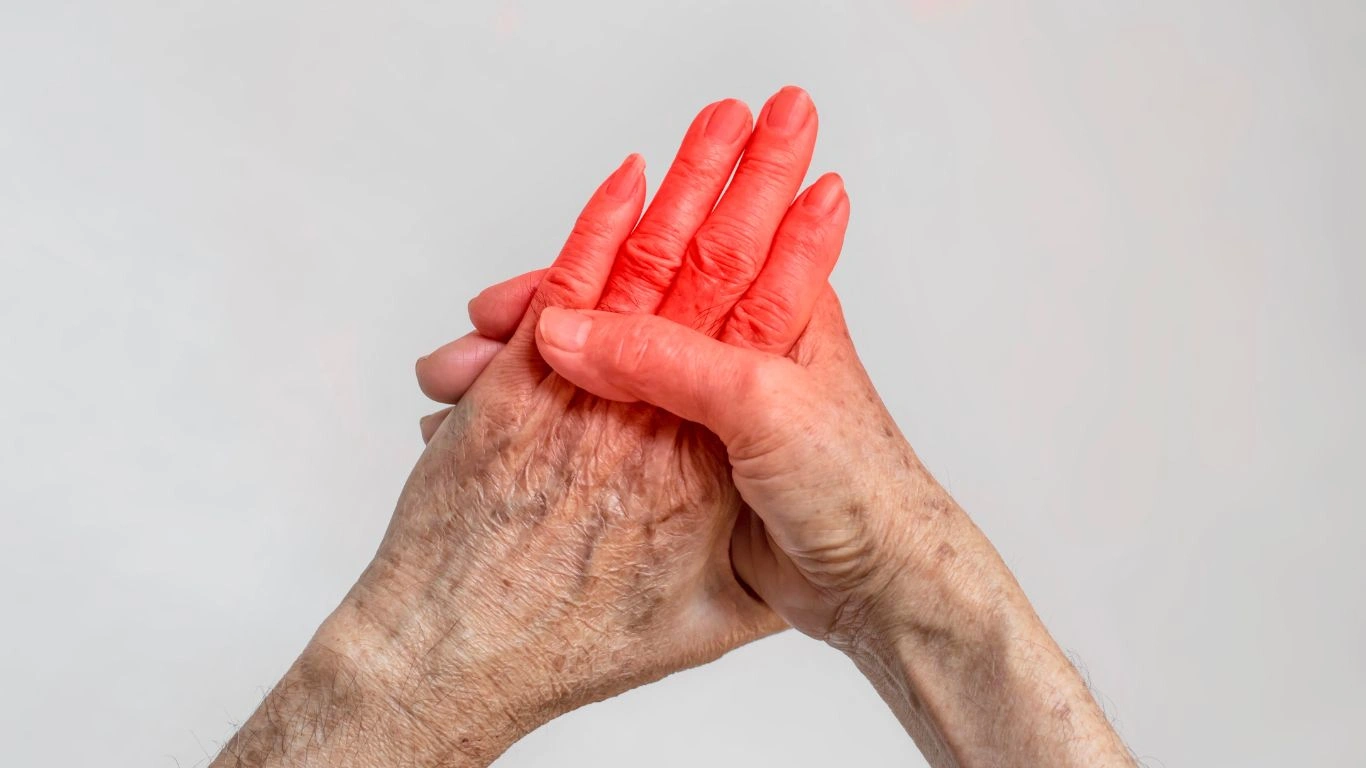Managing Rheumatoid Arthritis Pain Behind the Knees
Rheumatoid arthritis (RA) is a chronic condition that causes inflammation in the joints. If you’re feeling pain behind your knees, RA could be one possible reason. This kind of pain can interfere with walking, standing, or even just getting through the day. Knowing what’s going on can help you manage symptoms early and protect your joints from long-term damage.
Understanding Rheumatoid Arthritis and the Knee
RA is an autoimmune disease, which means the immune system attacks healthy tissues by mistake. In RA, the lining of the joints—called the synovium—becomes inflamed. Over time, this can damage the cartilage and bone inside the joint.
The knee is one of the largest and most complex joints in the body. It connects the thigh bone (femur) to the shin bone (tibia) and includes other parts like the kneecap (patella) and several fluid-filled sacs called bursae. Pain behind the knee can come from inflammation in any of these areas.
When RA affects the knee, the pain isn’t always felt directly in the front. It can show up behind the knee due to swelling, joint damage, or secondary conditions like Baker’s cysts.
If you’re feeling a dull ache, stiffness, or swelling at the back of the knee, RA may be playing a role—especially if you already have the condition.
How Rheumatoid Arthritis Affects Knee Function
Healthy knees help you bend, straighten, and support your body during activities like walking, climbing stairs, or standing up. RA disrupts these functions by attacking the soft tissues inside the knee joint.
The main target in RA is the synovial lining. When this lining gets inflamed, it thickens and produces extra fluid, leading to swelling. This swelling puts pressure on surrounding tissues, including those at the back of the knee.
Over time, the inflammation can wear down cartilage and bone. This causes the joint to become unstable or deformed, which may lead to pain in different parts of the knee—including the back.
As RA progresses, muscles around the knee may weaken from lack of use or joint instability. This adds to pain and makes movement harder.
Common Causes of Pain Behind the Knee in RA
Pain behind the knee in people with RA can come from a few different sources. Knowing these can help you understand your symptoms better:
- Joint Inflammation: The most direct cause. Swollen knee joints put pressure on the back of the knee, especially during movement or after resting.
- Baker’s Cyst: A fluid-filled sac that forms behind the knee when joint fluid builds up. It’s common in RA and causes swelling, tightness, and pain behind the knee.
- Tendon Inflammation: RA can inflame tendons (tissues that connect muscle to bone), leading to pain in the back of the knee.
- Bursitis: Inflammation of the bursae—small sacs of fluid that cushion the joint—can cause tenderness behind the knee.
- Joint Damage: As RA breaks down cartilage and bone, it may cause joint deformities that put extra strain on the back of the knee.
- Muscle Weakness: When muscles around the knee weaken, they provide less support, which can lead to pain from overuse or compensation.
If you notice these signs, it might be your body telling you that inflammation is getting worse.
Recognizing Symptoms of RA Behind the Knee
Pain behind the knee may not be the only sign. Other symptoms can develop alongside it, especially in people with active RA. These include:
- Stiffness: Especially in the morning or after long periods of sitting. The knee may feel “locked” or difficult to bend.
- Swelling: The knee may look puffy or feel warm to the touch. Swelling often spreads behind the joint.
- Limited Movement: You may not be able to fully bend or straighten your knee.
- Clicking or Popping: Sounds or feelings of grinding when you move your knee, often due to damaged cartilage.
- Fatigue: RA can cause general tiredness, which may feel worse when pain flares up.
- Instability: Feeling like your knee might give out when walking or standing.
If you’re noticing several of these signs together, it could be a flare-up or worsening of your condition. It’s important not to ignore the changes.
When to See a Doctor
Pain behind the knee can have many causes. While it might be a minor flare, it could also signal a Baker’s cyst, joint damage, or other complications. Here’s when to get medical advice:
- Pain that lasts more than a few days or keeps coming back
- Swelling that doesn’t improve with rest or ice
- Difficulty bending or straightening your knee
- A sensation of fullness or a lump behind the knee
- Sharp or shooting pain, especially when walking
- Signs of infection like fever, redness, or warmth
Your doctor may do a physical exam, take X-rays or an MRI, or draw fluid from the knee to check for inflammation. These tests can help confirm if RA is the cause or if something else is going on.
Starting treatment early can reduce long-term damage. Medications like DMARDs (disease-modifying antirheumatic drugs), corticosteroids, and physical therapy are common ways to manage RA symptoms in the knees.
What You Can Do at Home
While medical treatment is key, there are also some things you can do at home to ease discomfort behind the knee:
- Rest: Avoid activities that worsen the pain. Give your knee time to heal during flares.
- Ice Packs: Apply cold for 15–20 minutes at a time to reduce swelling.
- Gentle Movement: Low-impact activities like walking or stretching help keep the knee flexible.
- Compression: Knee sleeves or wraps may provide support and reduce swelling.
- Elevation: Raise your leg above heart level when resting to reduce fluid buildup.
- Weight Management: Keeping a healthy weight reduces pressure on the knees.
If you’re unsure whether an activity is safe, check with your doctor or physical therapist. They can guide you based on your current joint health.
Living with RA Knee Pain
Dealing with RA pain behind the knees can be frustrating, but you’re not alone. Many people find ways to manage symptoms and stay active with the right care and support.
Keep track of your symptoms, especially when they get worse or interfere with daily life. Even small changes, like pain while climbing stairs or discomfort at night, can be important clues for your doctor.
Don’t wait until the pain is severe. Getting help early can keep you more comfortable and prevent long-term damage to your joints.
Talk to your doctor if you’re noticing pain behind the knee or other changes in how your joints feel. You deserve to move through life with as little pain as possible—and the right care can make all the difference.

Tarra Nugroho is a dedicated Nurse Practitioner with a strong foundation in family and preventive care. She brings both compassion and clinical expertise to her practice, focusing on patient-centered care and health education. As a contributor to Healthusias.com, Tarra translates medical knowledge into clear, empowering articles on topics like women’s health, chronic disease management, and lifestyle medicine. Her mission is simple: help people feel seen, heard, and informed—both in the clinic and through the content she creates. When she’s not caring for patients, Tarra enjoys weekend hikes, plant-based cooking, and curling up with a good health podcast.






